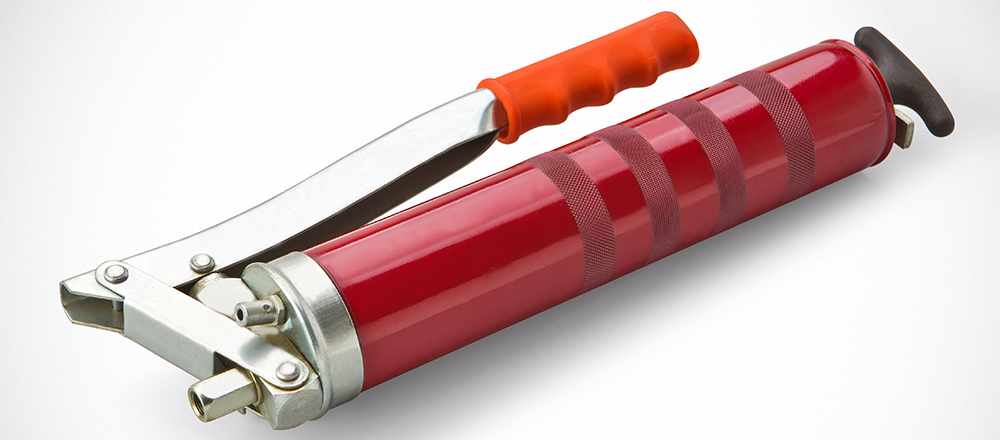Grease Handling – Incorrect Storage is Costing You Money

Grease Handling
Are You Properly Storing and Handling Your Grease?
Grease doesn’t get as much attention as other types of lubricant products, but it can in fact be impacted by fluctuations in temperature and should be stored and handled in a way that maintains its chemical integrity. In this article we spoke with Troy Hudson, our Industrial Development Manager here at SCL, and he offered some insight into why grease handling mismanagement could be costing your business unnecessarily.
What Grease is Made Of
According to an article in Machinery Lubrication, grease composition equals “70 to 95 percent base oil + 3 to 30 percent thickener system + 0 to 10 percent additives.” Grease is considered to be a semisolid/semifluid material that is comprised of a liquid lubricant and thickening agent. The thickening agent is made up of either “simple or complex metal soaps of lithium, calcium, aluminum, barium or sodium, or non-soap such as clay (bentone) or polyurea.” The thickener serves as a sort of “sponge” that contains microscopic surface features that allow for the collection and storage of base oils and additives.
The Issue With Oil Bleeding
When the thickener is stressed by fluctuating temperatures during either storage or use, it can release base oils, creating what is known as an oil bleed – recognized as either dynamic or static. Although a certain amount of bleed is considered normal, it can be minimized through proper storage and usage. The release or bleeding of these oils is part of the lubricating qualities of grease, but when you stress its chemical composition too much, it can alter the integrity of your product, which may in turn impact the integrity of your machinery. Says Hudson, “With incorrect grease handling, when your grease is compromised by thermal or mechanical stress, your equipment is compromised.”
Oil Release and Reversibility
A grease’s thickener should be able to release base oils when needed for proper lubrication, as well as show “reversibility.” Reversibility is a grease’s ability to recapture its base oils when thermal stress has been removed, returning it to its original state of thickness and consistency where the oils are reabsorbed into the thickener. A grease that is handled and stored under optimal conditions will retain this flexibility. A grease thats chemical makeup has been compromised will not, and you will see a significantly higher amount of oil bleeding.
Assessing the Problem
Says Hudson, “The development needed to shift an organization into a proactive maintenance model is dependent on having a strong lubrication program. Which isn’t just limited to doing set PM cycles or doing oil analysis, it needs to be a completely holistic approach, which means looking at lubrication storage and handling practices as contributing factor to component failures. Grease is no expectation to this, and it is easy to claim the grease formulation is the sole cause of a possible increase in component wear or failures. Which very well be the case, but before we contribute all blame to the formulation, we should also consider the product storage conditions and handling practices before the product is being applied. The goal here is to help our customer never fail the same way twice by looking at the true root of the issue, not just the quick fix. In this scenario, the grease not preforming to expected standards could just as easily been caused by a contaminated grease gun or storage drum, as the incorrect product being used, we need to look at both option and see where we can help you improve. We offer Reliability Lubrication Services (R.L.S.) that provides onsite customer specific training programs on best storage and handling practices for specific products such as grease and best in class lubricant application training. This is a reflection upon us as a company and how we want to be view more as a partner with our customers not a vendor, working together over the course of years to help them improve processes that are effecting their bottle line versus only supporting them with just one-off purchases.
How to Implement Proper Grease Handling
- Proper Packaging That Caters to Your Specific Needs – Are you buying the correct package style for your specific grease volume needs? If you have a 55-gallon drum of a grease sitting in the sun or in a hot corner of your warehouse for 6 months to a year, when the chemical composition of that product is compromised, that will be a significant inventory loss. Purchasing grease in packaging that fits your volume needs will cut down on such costly waste.
- Proper Containment Prevents Contamination – Dust, ash, dirt, soot, water and other contaminants may find their way into your grease if not properly contained, impacting thickening and causing potential mechanical problems during usage. By keeping your grease containers tightly sealed and covered if stored outside, you can keep your grease from becoming contaminated.
- Keep Grease Containers Away from Excessive Heat – Whether that be from direct sunlight, an extremely hot area within a warehouse or near an external heat source such as a steam pipe, furnace or truck cab, keep your grease away from excessive heat. According to Machinery Lubrication, “If a barrel warmer is used, it should have some type of temperature-regulating mechanism. The grease should never be heated above 75 degrees F, and the barrel warmer should not be left on overnight or unattended.”
- Monitor the Age of Your Grease – The National Lubricating Grease Institute (NLGI) recommends that grease be inspected if more than a year old. To keep track of the age of your grease, maintain a separate inventory and utilization record for each product. This will allow you to track the amount of grease used and in what capacity to keep an accurate inventory. With time, greases can become visibly altered in their consistency, becoming age hardened or with excessive bleeding. If you suspect that your grease has been sitting for too long, have the product tested. If necessary, properly dispose of the grease and purchase new product, keeping these proper grease handling tips in mind to prevent future waste.
- Proper Handling of Grease Guns – If you are using grease cartridge tubes, store them in an upright position at all times. If left in a grease gun, the cartridge should be depressurized, wiped clean and stored in a cool, clean and dry environment to prevent oil bleeding.
The Bottom Line
With proper grease handling methods and practices, you can maintain the correct amount of grease for your inventory needs and keep that product in optimal working condition throughout the lifespan of the grease. Grease will naturally deteriorate over time – oxidizing, bleeding, changing in color and consistency – but the lifespan of your grease can be significantly impacted by how it is stored and handled. The more that grease is exposed to fluctuating temperatures, especially high heat, as well as to various contaminants and depending on how long your grease sits in these conditions will determine the chemical integrity of your product over time.
Contact an SCL Consultant Today
In a wide range of industrial sectors, SCL is committed to being the number one logistics and solutions provider for the products that protect and optimize the machines that keep our country moving. We pride ourselves on remaining at the forefront of industry trends and technological innovations, and as the market continues to evolve, we are committed to providing extensive product and industry knowledge and total performance satisfaction for our customers. For information on how we can assist your fleet in choosing the optimal products at a competitive price, contact an SCL consultant today.
